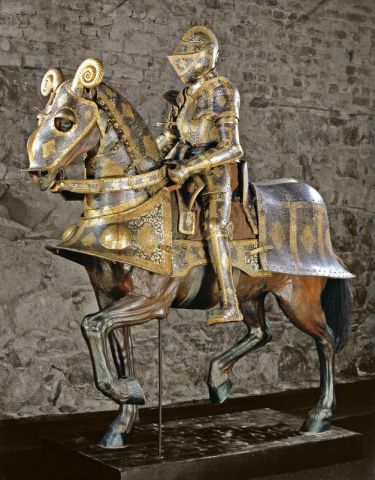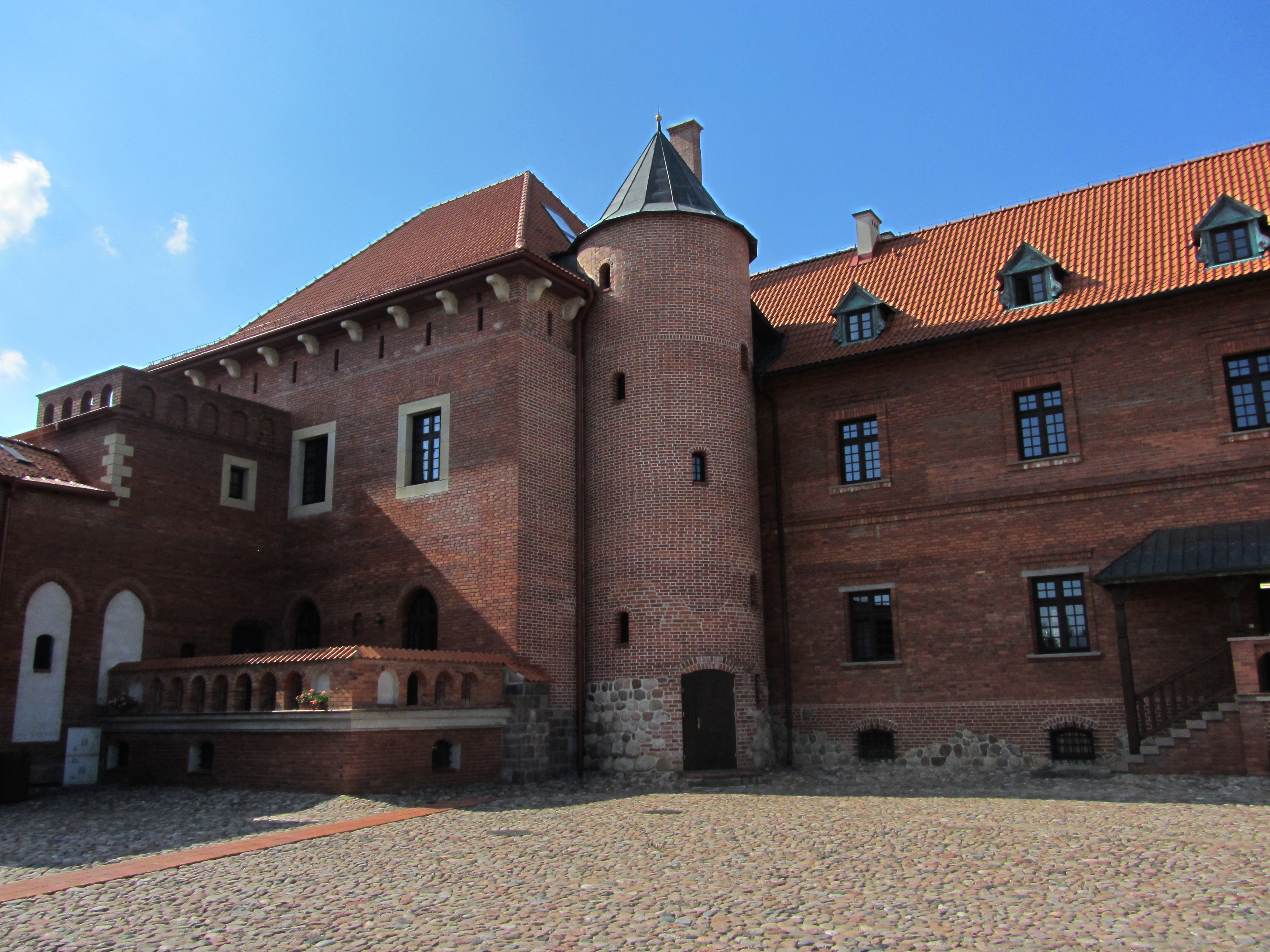Tykocin Castle on:
[Wikipedia]
[Google]
[Amazon]
The Tykocin Royal Castle is a 15th-century castle located on the right bank of the river
 The castle – then located on a border area in the
The castle – then located on a border area in the  Based on the preserved plans of the fortress, found in the archives in
Based on the preserved plans of the fortress, found in the archives in
Zamek w Tykocinie feb 2019.jpg, Reconstructed west wing of the castle.
Tykocin 2010castle fc06.jpg
Tykocin Castle, Poland, June 2020.jpg, Courtyard
2013 Interior of the Castle in Tykocin - restaurant - 12.jpg
Tykocin Plan Zamku.svg
Tykocin 1705.jpg
2013 Interior of the Castle in Tykocin - restaurant - 02.jpg, Castle restaurant
Piwnice zamek w Tykocinie.jpg, Castle cellars
File:Tykocin July 2013 148.JPG,
History of the Tykocin Castle
*
{{DEFAULTSORT:Tykocin Castle Castles in Podlaskie Voivodeship Residences of Polish monarchs Royal residences in Poland Castles of the Grand Duchy of Lithuania
Narew
The Narew (; ; or ) is a 499-kilometre (310 mi) river primarily in north-eastern Poland. It is a tributary of the river Vistula. The Narew is one of Europe's few braided rivers, the term relating to the twisted channels resembling braided h ...
in Tykocin, Poland. It fell into ruin in the 18th century and its reconstruction began in 2002.
History
 The castle – then located on a border area in the
The castle – then located on a border area in the Grand Duchy of Lithuania
The Grand Duchy of Lithuania was a sovereign state in northeastern Europe that existed from the 13th century, succeeding the Kingdom of Lithuania, to the late 18th century, when the territory was suppressed during the 1795 Partitions of Poland, ...
– was built in 1433 for Lithuanian noble Jonas Goštautas, voivode of Trakai and Vilnius
Vilnius ( , ) is the capital of and List of cities in Lithuania#Cities, largest city in Lithuania and the List of cities in the Baltic states by population, most-populous city in the Baltic states. The city's estimated January 2025 population w ...
, replacing the original wooden fortress. In the 1560s, upon the death of the last member of the Goštautas family the castle became the property of King Sigismund II Augustus
Sigismund II Augustus (, ; 1 August 1520 – 7 July 1572) was King of Poland and Grand Duke of Lithuania, the son of Sigismund I the Old, whom Sigismund II succeeded in 1548. He was the first ruler of the Polish–Lithuanian Commonwealth and t ...
, who expanded it. The construction was supervised by Hiob Bretfus, military engineer and royal architect. During the reign of Sigismund Augustus the structure served as a royal residence with an impressive treasury and library as well as the main arsenal of the crown. In 1611–1632 the castle was rebuilt again and surrounded with bastion
A bastion is a structure projecting outward from the curtain wall of a fortification, most commonly angular in shape and positioned at the corners of the fort. The fully developed bastion consists of two faces and two flanks, with fire from the ...
fortifications by Krzysztof Wiesiołowski, starosta
Starosta or starost (Cyrillic: ''старост/а'', Latin: ''capitaneus'', ) is a community elder in some Slavic lands.
The Slavic root of "starost" translates as "senior". Since the Middle Ages, it has designated an official in a leadersh ...
of Tykocin.
During the 1655 Deluge
A deluge is a large downpour of rain, often a flood.
The Deluge refers to the flood narrative in the biblical book of Genesis.
Deluge or Le Déluge may also refer to:
History
*Deluge (history), the Swedish and Russian invasion of the Polish-L ...
, the Radziwiłł army occupied the castle. On 31 December, 1655, when the castle was besieged by troops of the Tyszowce Confederation, Janusz Radziwiłł, one of the most powerful people in the Polish–Lithuanian Commonwealth
The Polish–Lithuanian Commonwealth, also referred to as Poland–Lithuania or the First Polish Republic (), was a federation, federative real union between the Crown of the Kingdom of Poland, Kingdom of Poland and the Grand Duchy of Lithuania ...
considered by some as the traitor, died here. Ultimately, the castle was captured on 27 January, 1657.
In the following years the castle and surrounding lands were donated to Stefan Czarniecki
Stefan Czarniecki (Polish: of the Łodzia coat of arms, 1599 – 16 February 1665) was a Polish–Lithuanian Commonwealth, Polish szlachta, nobleman, general and military commander. In his career, he rose from a petty nobleman to a magnate hol ...
in reward for his contribution in the war. The new owner rebuilt the castle after 1698. In November 1705 the meeting between King Augustus II the Strong
Augustus II the Strong (12 May 1670 – 1 February 1733), was Elector of Saxony from 1694 as well as King of Poland and Grand Duke of Lithuania from 1697 to 1706 and from 1709 until his death in 1733. He belonged to the Albertine branch of the H ...
and Peter the Great
Peter I (, ;
– ), better known as Peter the Great, was the Sovereign, Tsar and Grand Prince of all Russia, Tsar of all Russia from 1682 and the first Emperor of Russia, Emperor of all Russia from 1721 until his death in 1725. He reigned j ...
took place here. During this meeting the Order of White Eagle was established by the King of Poland
Poland was ruled at various times either by dukes and princes (10th to 14th centuries) or by kings (11th to 18th centuries). During the latter period, a tradition of Royal elections in Poland, free election of monarchs made it a uniquely electab ...
.
In 1734 the castle was destroyed by fire. Since that time, the uninhabited building began to fall into disrepair. In 1771 remains of the castle were destroyed by flood and in 1914, during World War I, the material from the remaining walls was used by the German soldiers to build roads.
Saint Petersburg
Saint Petersburg, formerly known as Petrograd and later Leningrad, is the List of cities and towns in Russia by population, second-largest city in Russia after Moscow. It is situated on the Neva, River Neva, at the head of the Gulf of Finland ...
, the residential part of the castle has been restored (west wing in the style of late Gothic). The original castle was built on a plan of a trapezoid
In geometry, a trapezoid () in North American English, or trapezium () in British English, is a quadrilateral that has at least one pair of parallel sides.
The parallel sides are called the ''bases'' of the trapezoid. The other two sides are ...
with a courtyard and four cylindrical towers at the corners. The complex was surrounded with fortifications – curtains combined four terrestrial inner bastions.
Treasury
In about 1565 King Sigismund Augustus installed at the castle his private treasury and a collection of books, initially stored at the Vilnius Castle. Sigismund Augustus was a passionate collector of jewels. According tonuncio
An apostolic nuncio (; also known as a papal nuncio or simply as a nuncio) is an ecclesiastical diplomat, serving as an envoy or a permanent diplomatic representative of the Holy See to a state or to an international organization. A nuncio is ...
Bernardo Bongiovanni's relation, his collection was allocated in 16 chests. Among the precious items in his possession was Charles V Charles V may refer to:
Kings and Emperors
* Charles V, Holy Roman Emperor (1500–1558)
* Charles V of Naples (1661–1700), better known as Charles II of Spain
* Charles V of France (1338–1380), called the Wise
Others
* Charles V, Duke ...
's ruby of 80 000 scudos' worth, as well as the emperor's diamond medal with Habsburgs
The House of Habsburg (; ), also known as the House of Austria, was one of the most powerful dynasties in the history of Europe and Western civilization. They were best known for their inbreeding and for ruling vast realms throughout Europe d ...
Eagle on one side and two columns with a sign ''Plus Ultra
(, , ) is a Latin phrase and the national motto of Spain. A reversal of the original phrase ''non plus ultra'' ("nothing further beyond"), said to have been inscribed as a warning on the Pillars of Hercules at the Strait of Gibraltar (whic ...
'' on the other side. He had also a sultan
Sultan (; ', ) is a position with several historical meanings. Originally, it was an Arabic abstract noun meaning "strength", "authority", "rulership", derived from the verbal noun ', meaning "authority" or "power". Later, it came to be use ...
's sword of 16 000 ducat
The ducat ( ) coin was used as a trade coin in Europe from the later Middle Ages to the 19th century. Its most familiar version, the gold ducat or sequin containing around of 98.6% fine gold, originated in Venice in 1284 and gained wide inter ...
s' worth, 30 precious horse trappings and 20 different private-use armour
Armour (Commonwealth English) or armor (American English; see American and British English spelling differences#-our, -or, spelling differences) is a covering used to protect an object, individual, or vehicle from physical injury or damage, e ...
s. The papal nuncio wrote in his diary ''I also saw twenty suits of royal armour of which four were of most wondrous workmanship, namely with a beautiful sculpture and figures set with silver ..It cost six thousand scudos''. The king's possessions included a rich collection of tapestries (360 pieces), commissioned by him in Brussels
Brussels, officially the Brussels-Capital Region, (All text and all but one graphic show the English name as Brussels-Capital Region.) is a Communities, regions and language areas of Belgium#Regions, region of Belgium comprising #Municipalit ...
in the years 1550–1560, which decorated the castle's walls. The king's treasures were scattered after his death.
Gallery
Hussar
A hussar, ; ; ; ; . was a member of a class of light cavalry, originally from the Kingdom of Hungary during the 15th and 16th centuries. The title and distinctive dress of these horsemen were subsequently widely adopted by light cavalry ...
armour
File:2013 The cellars of the castle in Tykocin (museum) - 25.jpg
File:Round shot cannonbal Tykocin.jpg, Cannonbals
Tykocin July 2013 159.JPG
See also
* List of castles in PolandReferences
External links
*History of the Tykocin Castle
*
{{DEFAULTSORT:Tykocin Castle Castles in Podlaskie Voivodeship Residences of Polish monarchs Royal residences in Poland Castles of the Grand Duchy of Lithuania